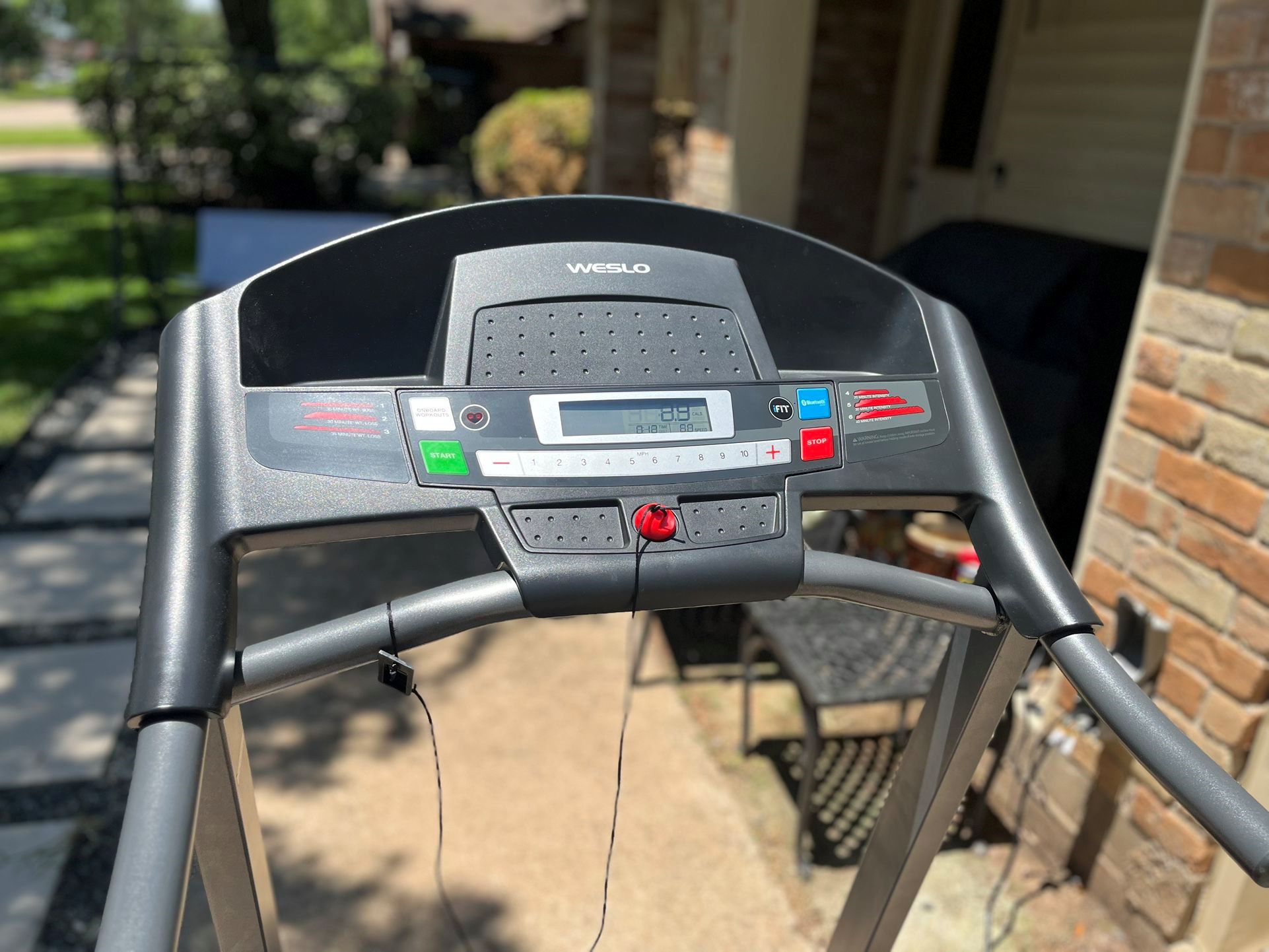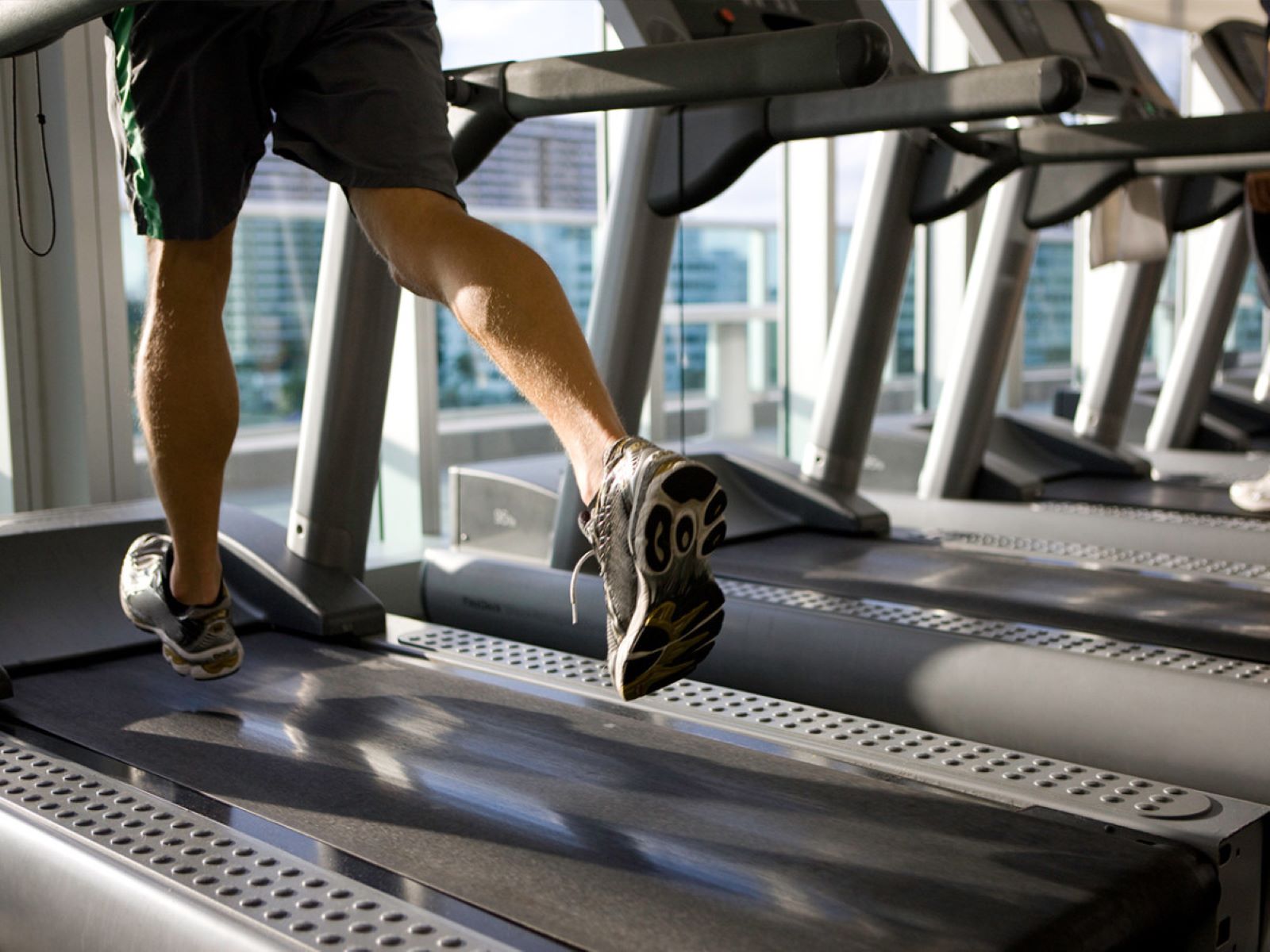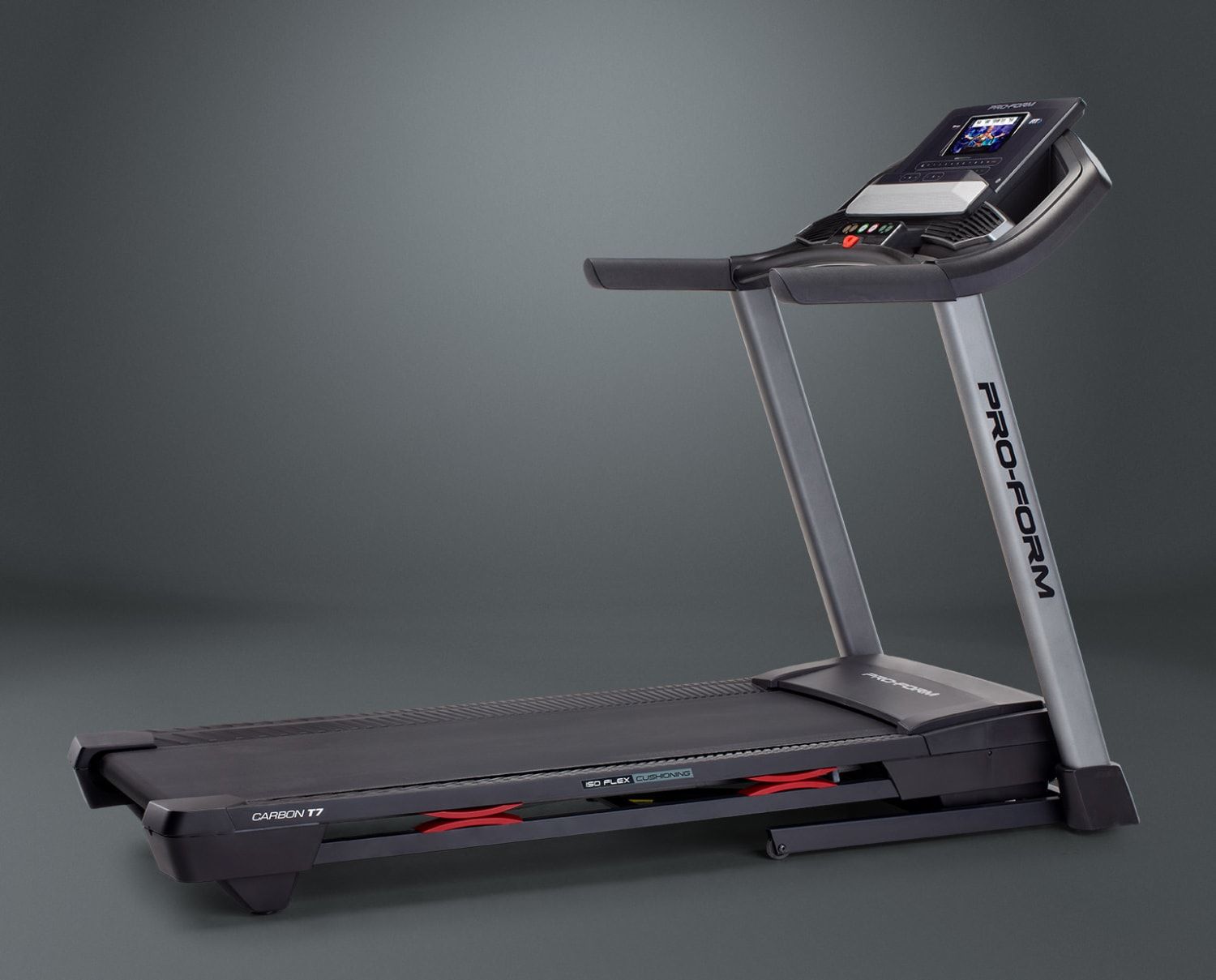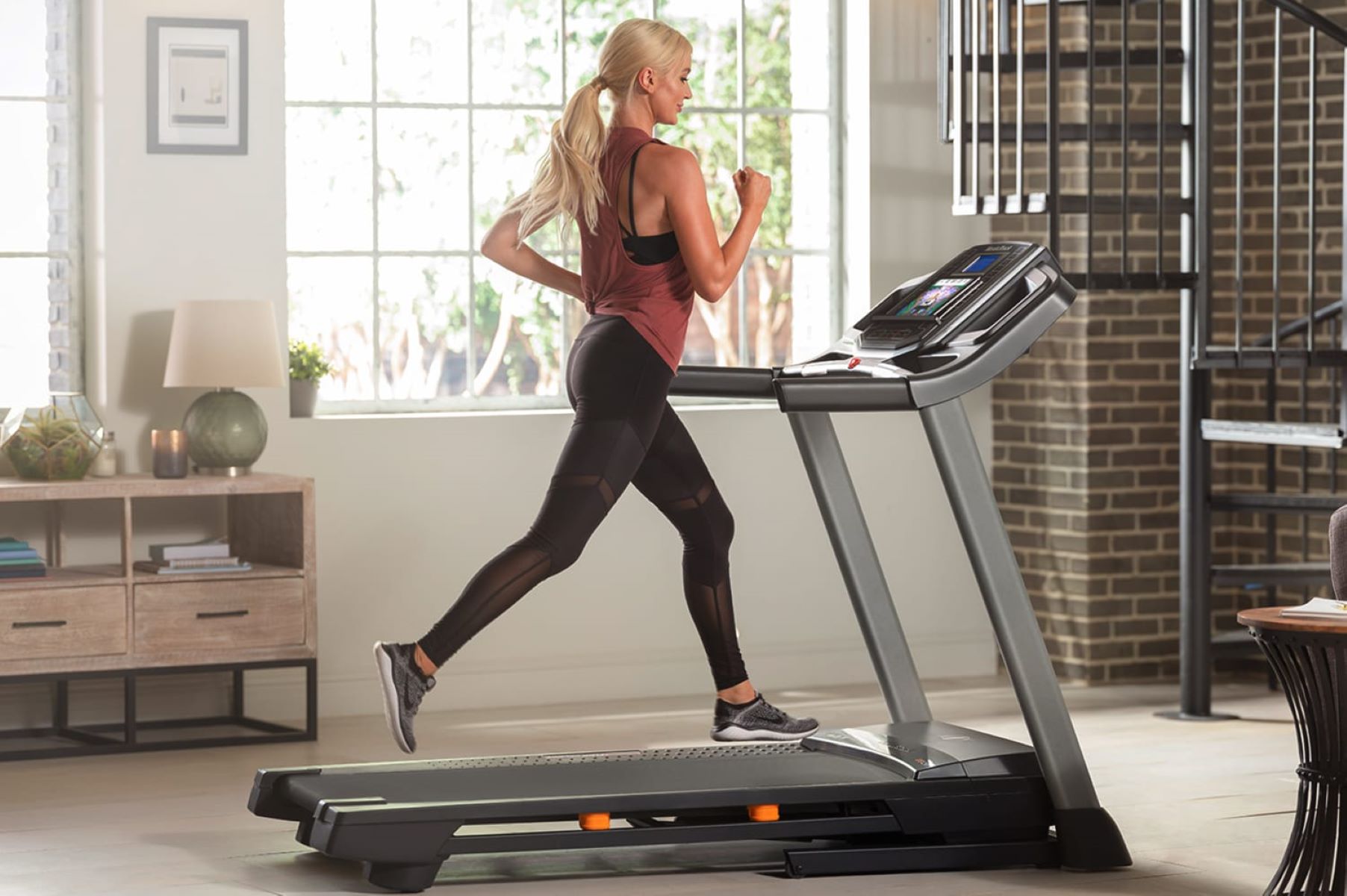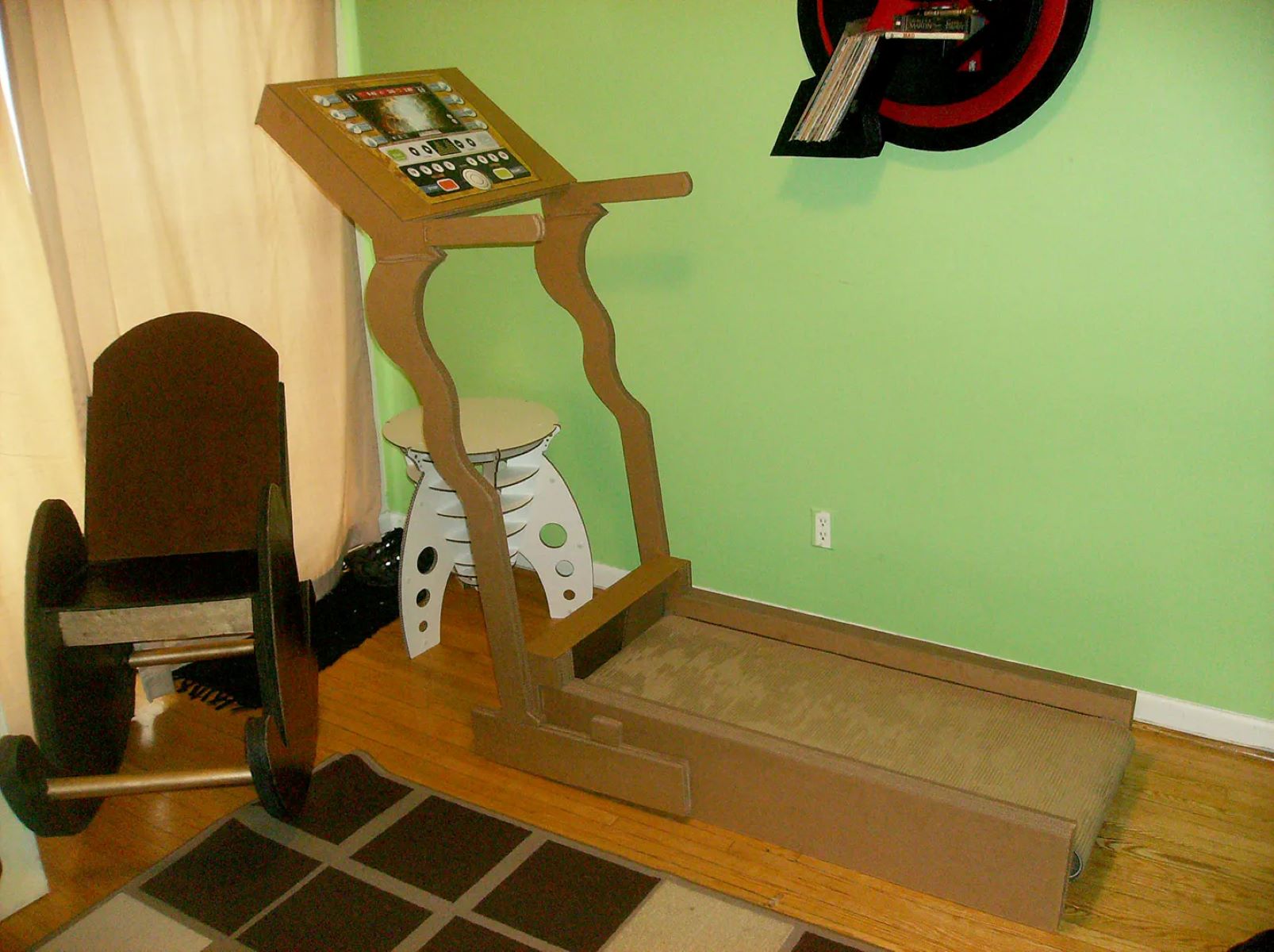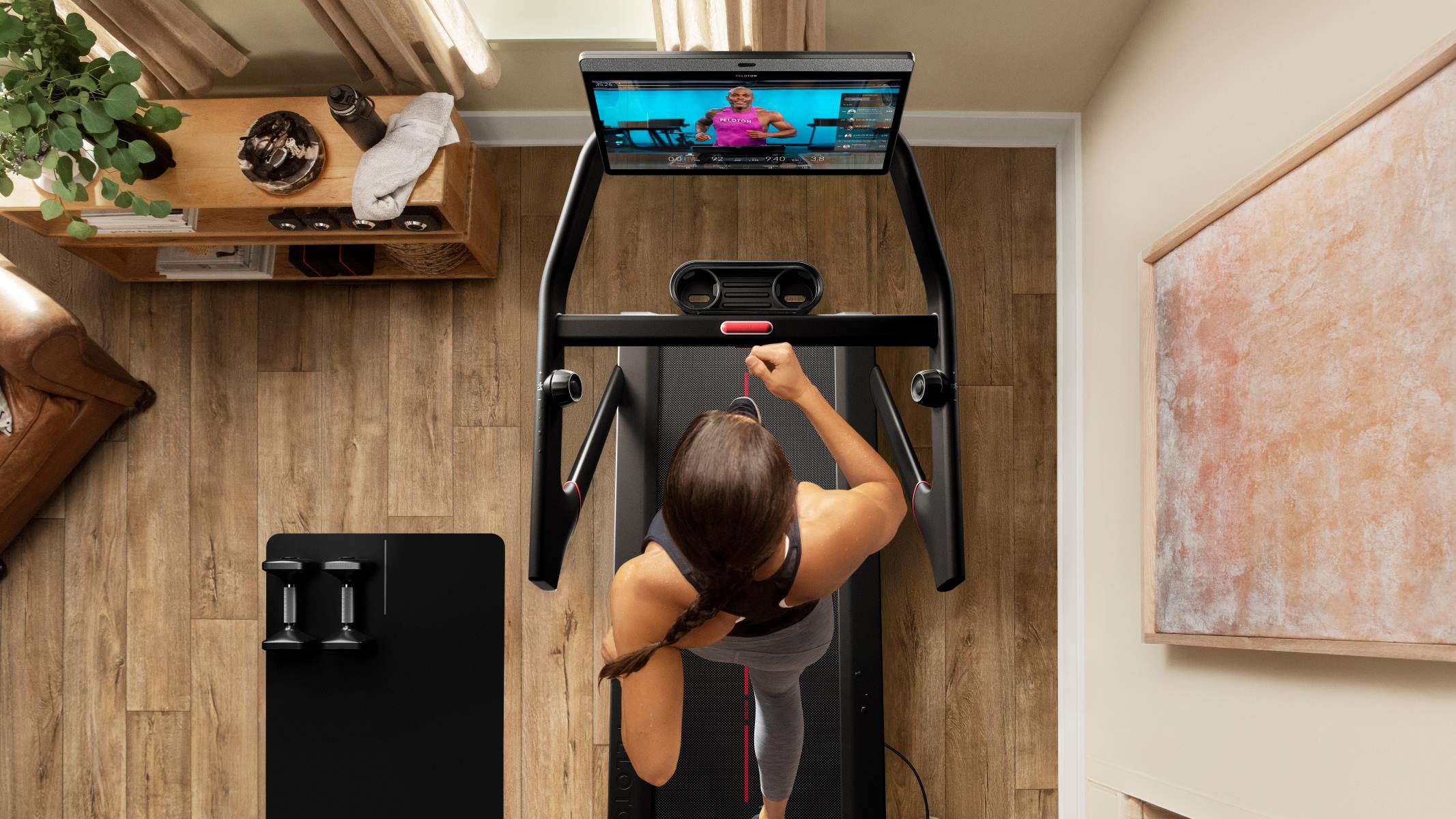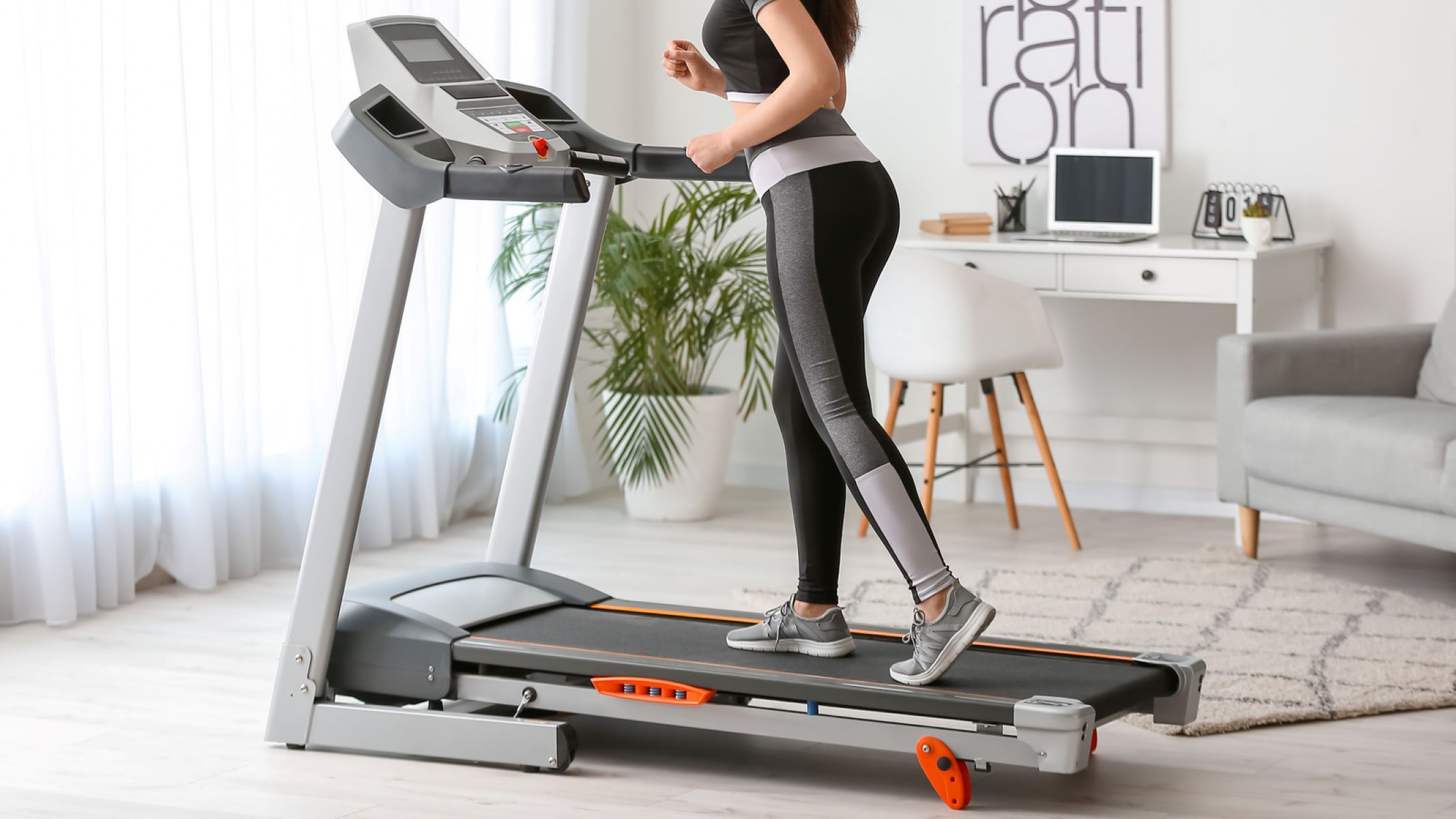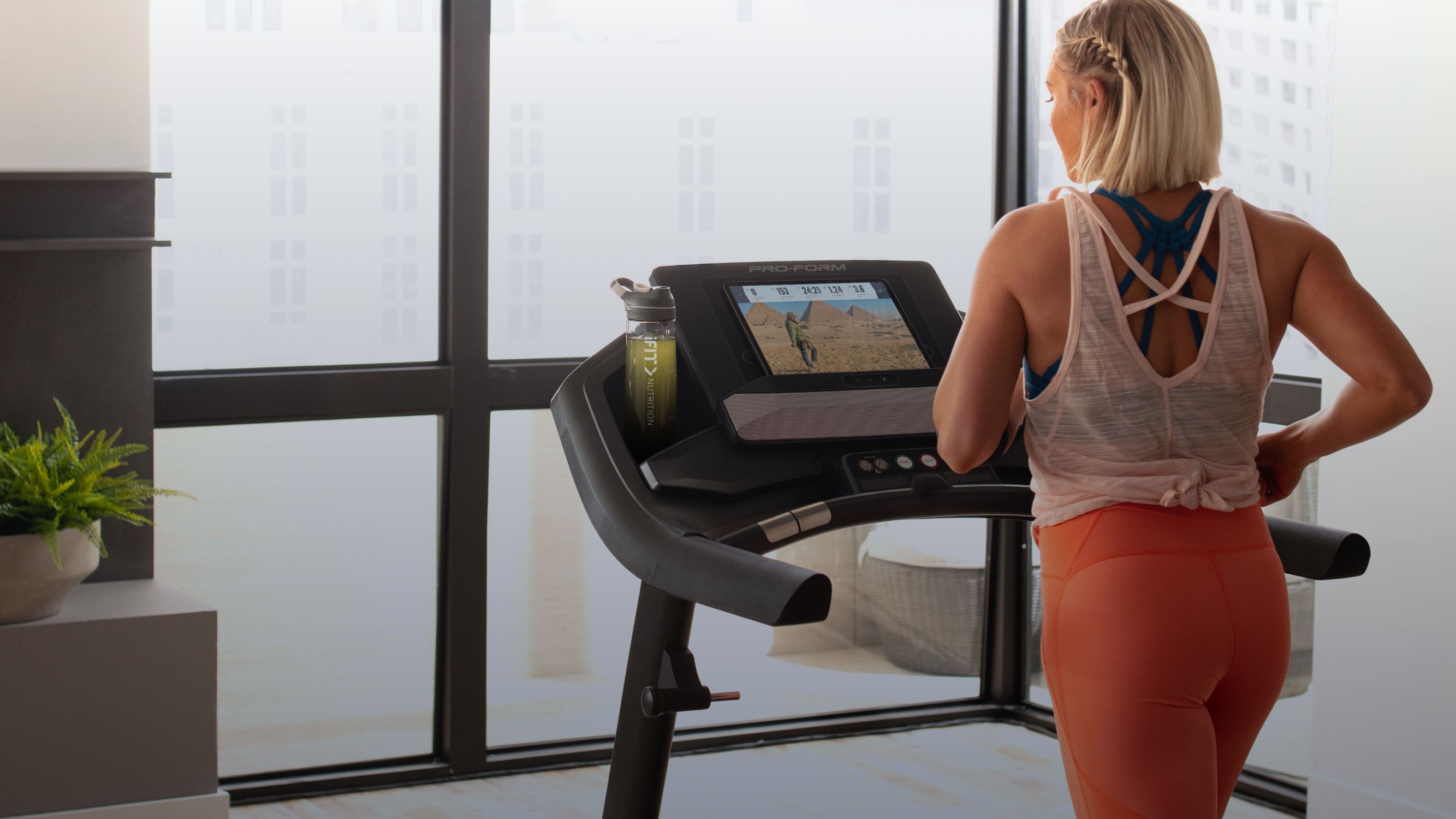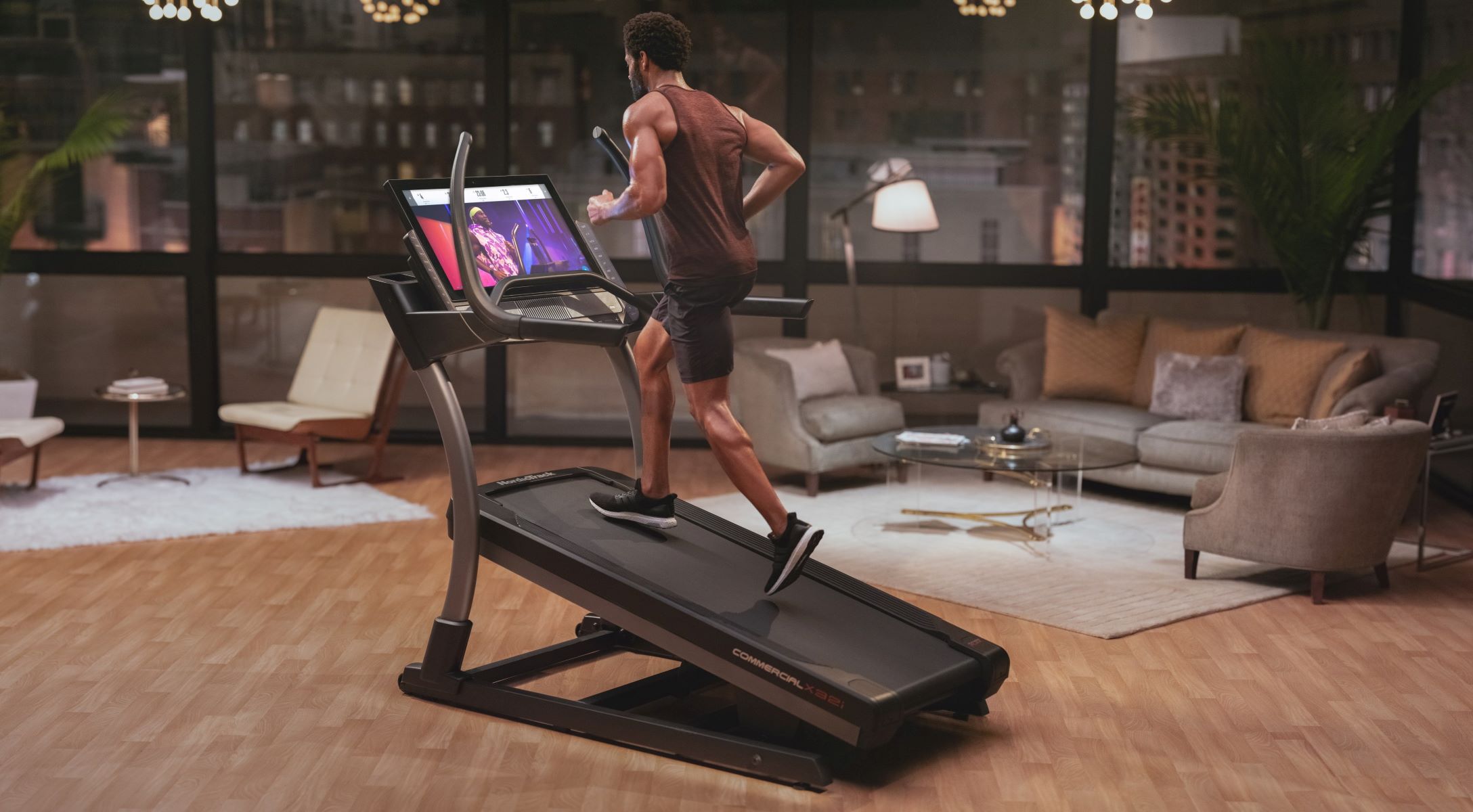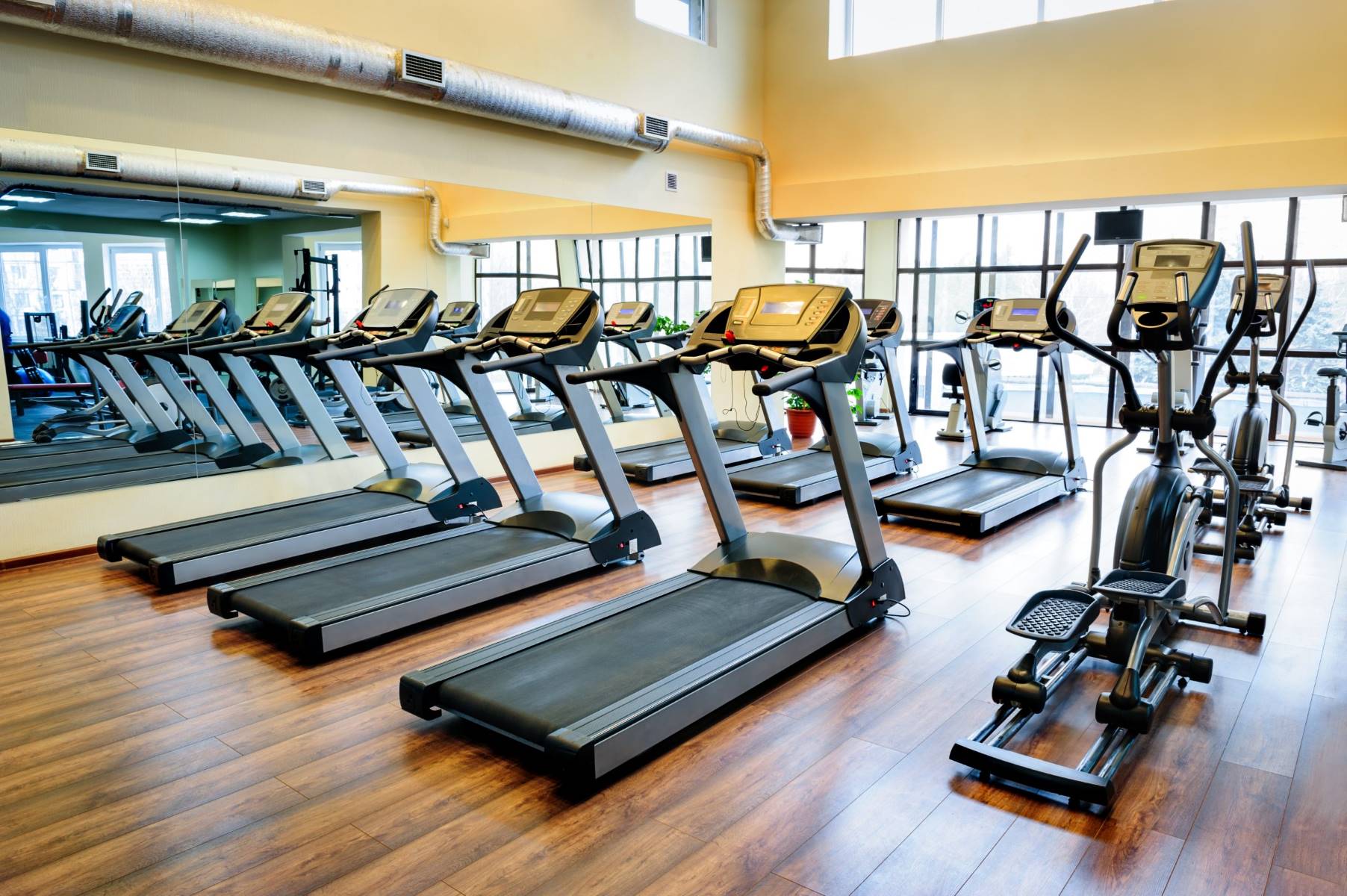

Featured
How To Run At Home Without A Treadmill
Modified: August 21, 2023
Discover how to stay fit and active at home without a treadmill with our featured workout routines. Achieve your fitness goals in the comfort of your own space.
Introduction
Running is a fantastic cardiovascular exercise that can help you stay in shape, improve your endurance, and boost your overall health and well-being. While many people prefer to run outdoors or on a treadmill at the gym, there are times when it may not be possible or convenient to do so. Whether it’s bad weather, lack of access to a treadmill, or simply the desire to enjoy the comfort and privacy of your own home, running at home without a treadmill is a great alternative.
In this article, we will explore the benefits of running at home without a treadmill, provide tips on setting up a running space, discuss warm-up exercises, running techniques, and incorporating interval training. We will also touch on tracking your progress and important safety precautions to keep in mind.
Running at home offers a wide range of advantages. First and foremost, it provides convenience. You can exercise whenever it suits your schedule, without having to worry about the hours of operation at a gym or the weather conditions outside. Additionally, running at home allows you to save time and money on commuting to a gym or purchasing expensive equipment.
Running is not only beneficial for physical health but also for mental well-being. Regular running can release endorphins, the feel-good hormones, which help reduce stress, anxiety, and depression. It can also improve sleep quality, boost self-confidence, and enhance overall energy levels. Whether you are a seasoned runner or just starting out, running at home can be a great way to stay motivated and energized.
In the following sections, we will provide you with practical tips on how to set up your running space, warm-up properly, utilize the right running techniques, incorporate interval training to challenge yourself, track your progress, and ensure your safety during your home running sessions.
Benefits of Running at Home without a Treadmill
Running at home without a treadmill comes with a variety of benefits that can help you reach your fitness goals and improve your overall well-being. Here are some of the key advantages of incorporating home running into your exercise routine:
- Convenience: One of the major benefits of running at home is the convenience it offers. You have the flexibility to choose the time and location that works best for you. Whether it’s early morning, late at night, or during a break in your workday, you can easily fit in a run without the need to travel to a gym or outdoor track.
- Cost-effective: Running at home eliminates the need for a gym membership or the expense of purchasing a treadmill. You can save money by utilizing the space you have, whether it’s in your living room, backyard, or nearby park, without any additional equipment costs.
- Privacy and Comfort: Running at home provides a level of privacy that can be appealing to many individuals. You can focus solely on your workout without the presence of others, which can be a confidence booster for those who may feel self-conscious. Additionally, you have the freedom to control the temperature, music, and other environmental factors, creating a comfortable and personalized running experience.
- Flexibility in Terrain: Unlike running on a treadmill, running at home allows you to experience different terrains and surfaces. Whether it’s running on grass, concrete, or even stairs, varying the terrain can challenge different muscle groups and add diversity to your workout routine.
- Family Inclusion: When you run at home, you can involve your family members as well. It can be an opportunity to bond, encourage physical activity, and set a positive example for your loved ones. Parents can even incorporate games or relay races to make it more engaging for children.
- Connection with Nature: If you have an outdoor space, running at home can provide a chance to connect with nature. You can enjoy the fresh air, listen to the sounds of birds chirping, and take in the calming sights of nature while getting your exercise. It can be a refreshing break from the hustle and bustle of everyday life.
No matter your fitness level or goals, running at home without a treadmill offers numerous advantages. The convenience, cost-effectiveness, privacy, flexibility in terrain, and the opportunity to involve your family or connect with nature are just a few of the many benefits you can experience. So why not lace up your shoes, step out of your comfort zone, and start enjoying the benefits of running at home today?
Setting Up a Running Space
Creating a dedicated running space at home can help you stay motivated, organized, and focused on your fitness goals. Here are some tips on how to set up an effective running space:
- Select a Suitable Area: Choose a space that provides enough room for you to move freely. It could be a spare room, basement, garage, or even a corner of your living room. Consider factors such as ventilation, lighting, and the availability of a flat surface.
- Clear the Space: Remove any furniture, clutter, or hazards that could interfere with your running routine. Create an open and safe area that allows you to move without obstacles. It’s important to have ample space around you to prevent accidents or injuries.
- Create a Comfortable Environment: Make your running space inviting and comfortable. Consider adding motivational posters, plants, or a mirror to enhance the atmosphere. You may also want to place a fan or air conditioner nearby to keep the temperature cool and comfortable during your workout.
- Consider Flooring: Choose a suitable flooring option that can support your running activities. If you have carpeted floors, ensure they are clean and free of tripping hazards. Alternatively, you can invest in rubber mats or interlocking foam tiles that provide adequate cushioning and support.
- Organize Your Equipment: Keep your running essentials in a designated area. This can include items like water bottles, a towel, a timer, a phone or music player, and any other accessories you use during your runs. Having everything readily available will help you stay focused and save time searching for items.
- Utilize Technology: Take advantage of fitness apps, smartwatches, or fitness trackers to monitor your progress and track your runs. These tools can provide valuable insights into your distance, pace, and calories burned, helping you stay motivated and focused on your goals.
- Add Entertainment: Make your running space enjoyable by incorporating entertainment options. Set up a TV or a Bluetooth speaker system to play music, watch your favorite shows, or follow along with online workout videos. This can help make your running sessions more engaging and enjoyable.
Remember, the key is to create a space that is conducive to your running routine and encourages consistency. Setting up a dedicated area will help you establish a sense of structure, making it easier to stay committed to your running journey. Experiment with different configurations and find what works best for you, ensuring your running space is personalized, functional, and inviting.
Warm-up Exercises
Before you start your running session, it’s crucial to properly warm up your body to prevent injuries and prepare your muscles for the workout ahead. Here are some effective warm-up exercises to incorporate into your routine:
- Dynamic Stretching: Perform dynamic stretches that target the major muscle groups involved in running. This can include leg swings, walking lunges, high knees, butt kicks, and hip circles. Dynamic stretching helps increase blood flow, range of motion, and muscle elasticity.
- Joint Rotations: Rotate your ankles, knees, hips, and shoulders in circular motions to lubricate the joints and improve their mobility. This can help reduce stiffness and enhance your overall running performance.
- Marching in Place: Stand upright and lift your knees high, one at a time, while keeping a brisk pace. This exercise helps activate the leg muscles, improve coordination, and increase heart rate gradually.
- Jumping Jacks: Perform jumping jacks to elevate your heart rate and engage the upper and lower body. Start with a lower intensity and gradually increase the speed and range of motion as you warm up.
- Arm Circles: Stand with your feet shoulder-width apart and extend your arms out to the sides. Make small circles with your arms, gradually increasing the size of the circles. This exercise helps warm up the shoulder and upper back muscles.
- Core Activation: Engage your core muscles by performing exercises such as plank variations, mountain climbers, or standing side bends. A strong core will help stabilize your body during your run and improve overall posture.
- Gradual Jogging: After performing some dynamic stretches and mobility exercises, begin with a light jog for 5-10 minutes. This helps increase your heart rate and gradually prepares your body for more intense running.
Remember to perform each warm-up exercise smoothly and in a controlled manner, avoiding any jerky movements or excessive bouncing. Aim for a warm-up duration of about 10-15 minutes to adequately prepare your body for the main running session.
Additionally, it’s important to listen to your body during the warm-up process. If you feel any discomfort or pain, modify or skip certain exercises and consult with a healthcare professional if needed. Warming up properly will not only help prevent injuries, but it will also enhance your performance and make your running experience more enjoyable.
Running Techniques
Mastering proper running techniques can greatly improve your running efficiency, prevent injuries, and enhance your overall performance. Here are some key running techniques to keep in mind:
- Posture: Maintain an upright posture while running, with your head up, shoulders relaxed, and core engaged. Avoid leaning forward or slouching, as this can lead to unnecessary strain on your muscles and joints.
- Footstrike: Aim for a midfoot or forefoot strike when your foot makes contact with the ground. This helps distribute the impact evenly and allows for a more efficient transfer of energy, reducing the risk of injuries associated with heel striking.
- Cadence: The ideal running cadence is generally around 170-180 steps per minute. Focusing on a higher cadence can increase your running efficiency and reduce the risk of overstriding, which can put unnecessary stress on your joints.
- Arm Swing: Keep your arms relaxed and bent at a 90-degree angle. Swing them back and forth naturally, parallel to your body, without crossing the midline. A controlled arm swing helps maintain balance, improve momentum, and enhance overall running efficiency.
- Breathing: Develop a rhythmic and controlled breathing pattern. Inhale deeply through your nose and exhale fully through your mouth. Find a breathing rhythm that feels comfortable for you, keeping in mind that proper oxygen intake is crucial for maintaining endurance.
- Pacing: Start your run at a comfortable pace and gradually increase your speed if desired. Avoid starting too fast, as it can lead to early fatigue. Monitor your running intensity by utilizing tools such as heart rate monitors or perceived exertion to ensure you maintain a sustainable pace.
- Relaxation: Try to stay relaxed throughout your entire body while running. Avoid unnecessary tension in your shoulders, arms, and facial muscles. Relaxation helps conserve energy and allows for a more efficient running technique.
- Hills and Inclines: When running uphill, lean slightly forward from your ankles and maintain a shorter stride length. Use your arms to power yourself up the hill. When running downhill, lean back slightly and focus on a controlled descent to minimize impact forces.
Practice these running techniques consistently to develop good habits and improve your overall running performance. Remember to listen to your body, make adjustments as needed, and allow yourself time to adapt to changes in technique. With patience and practice, you’ll soon notice improvements in your running form, efficiency, and enjoyment of the sport.
Incorporating Interval Training
Interval training is a powerful technique that can take your running to the next level by challenging your cardiovascular system and improving your speed and endurance. It involves alternating between periods of high-intensity effort and active recovery. Here’s how you can incorporate interval training into your running routine:
- Choose Your Intervals: Decide on the duration and intensity of your intervals based on your fitness level and goals. For beginners, start with shorter intervals of higher intensity efforts, such as 30 seconds of sprinting, followed by 1-2 minutes of active recovery. As you progress, you can increase the duration or intensity of your intervals.
- Warm-Up Properly: It’s crucial to warm up your body before starting interval training. Perform dynamic stretches and light jogging to prepare your muscles and get the blood flowing. This helps prevent injuries and prepares your body for the upcoming intense efforts.
- Start with Work-to-Rest Ratios: Initially, aim for a work-to-rest ratio of 1:2 or 1:3. This means that the time spent on high-intensity intervals should be half or one-third of the time spent on active recovery. As you become more comfortable, you can experiment with different ratios to challenge yourself further.
- Focus on Intense Efforts: During the high-intensity intervals, push yourself to run at a challenging pace, close to your maximum effort. This can be a sprint, a fast pace, or an incline run, depending on your fitness level and preferences. The key is to maintain the intensity throughout the interval.
- Recover Actively: During the active recovery periods, slow down your pace and allow your heart rate to come down. You can jog slowly, walk, or perform low-intensity exercises like jumping jacks or lunges. The goal is to catch your breath and prepare your body for the next high-intensity effort.
- Repeat the Intervals: Depending on your fitness level, repeat the intervals for a desired number of sets. Start with 2-3 sets and gradually increase the number as you progress. Be sure to listen to your body, allowing for sufficient recovery time between sets to avoid overexertion.
- Cool Down: After completing your interval training session, cool down by gradually decreasing your pace and performing static stretches to help your body recover and prevent post-workout muscle soreness.
Interval training is an effective way to improve your running speed, endurance, and overall cardiovascular fitness. It adds variety to your workouts and can break through plateaus. However, it’s important to gradually progress and listen to your body. Start with shorter intervals and work your way up as you become more comfortable and confident.
Remember, interval training can be intense, so it’s important to consult with a healthcare professional if you have any underlying health concerns or are new to high-intensity exercise. Enjoy the challenge and the rewards that interval training can bring to your running journey.
Tracking Your Progress
Tracking your progress is an essential component of any running routine as it helps you stay motivated, set goals, and monitor your improvements over time. Here are some effective ways to track your progress:
- Keep a Running Journal: Maintain a journal or use a running app to record the details of each run, including distance, time, pace, and how you felt during the workout. This allows you to track your progress and identify patterns or improvements over time.
- Set SMART Goals: Establish specific, measurable, attainable, relevant, and time-bound goals for your running. Examples include running a certain distance within a specific timeframe or improving your pace by a certain percentage. Regularly review your goals and adjust them as needed to keep yourself motivated and challenged.
- Utilize Technology: Take advantage of smartwatches, fitness trackers, or running apps that provide detailed data about your runs. These devices can track your distance, pace, heart rate, and even analyze your running form. Use this information to understand your performance and make necessary adjustments to your training.
- Track Non-Running Metrics: While tracking your running progress is essential, it’s also valuable to monitor other aspects of your fitness and well-being. This can include tracking your weight, body measurements, sleep quality, and energy levels. Having a holistic view of your health can help you identify how various factors impact your running performance.
- Periodic Fitness Assessments: Schedule regular fitness assessments to benchmark your running performance. These can include running a timed mile or participating in races or organized running events. By comparing your results over time, you can see tangible evidence of your progress and identify areas for improvement.
- Celebrate Milestones: Acknowledge and celebrate your achievements along the way. Whether it’s reaching a new distance milestone, achieving a personal best time, or completing a challenging race, take the time to appreciate your progress. It fuels your motivation and reminds you of how far you’ve come.
- Listen to Your Body: Pay attention to how your body feels during and after your runs. Notice any changes in energy levels, running form, or muscle soreness. By keeping track of how you feel, you can identify potential areas of improvement or signs of overtraining that require adjustments to your training plan.
Tracking your progress not only gives you tangible evidence of your improvements but also provides a sense of accountability and motivation. It allows you to set realistic goals, make informed decisions about your training, and make adjustments when necessary. Remember, everyone’s progress is unique, so focus on your own journey and celebrate every step forward.
Safety Precautions
While running is a safe and enjoyable activity, it’s important to prioritize safety to prevent injuries and ensure a positive running experience. Here are some key safety precautions to keep in mind:
- Warm-Up and Cool Down: Always begin your running session with a proper warm-up to prepare your muscles and prevent injuries. Similarly, end your run with a cool-down session to gradually lower your heart rate and stretch your muscles.
- Use Reflective Gear: If running in low-light conditions or at night, wear reflective clothing, vests, or accessories to make yourself visible to drivers and other pedestrians. This helps reduce the risk of accidents and ensures your safety.
- Choose Safe Routes: Plan your running routes carefully, opting for well-lit and populated areas. Avoid isolated or high-traffic roads if possible, as they may present safety hazards. Consider running in designated running areas, parks, or trails where possible.
- Wear Appropriate Shoes: Invest in a good pair of running shoes that provide proper support and cushioning. This helps prevent injuries such as shin splints or stress fractures. Replace your shoes regularly, as worn-out shoes may not offer adequate support.
- Stay Hydrated: Drink plenty of water before, during, and after your runs to stay hydrated. Dehydration can lead to fatigue, dizziness, and other health complications. If running for longer durations, consider carrying a water bottle or planning your route near water fountains.
- Observe Traffic Rules: If running on roads or in urban areas, follow all traffic regulations, such as crossing at designated crosswalks, obeying traffic lights, and using sidewalks when available. Be aware of your surroundings and always prioritize your safety.
- Listen to Your Body: Pay attention to any pain or discomfort during your runs. If you experience sharp or persistent pain, it’s important to stop running and seek medical attention if needed. Pushing through pain can lead to further injuries and setbacks.
- Stay Alert with Headphones: If you listen to music or podcasts while running, keep the volume at a safe level. Avoid completely blocking out external sounds, such as approaching vehicles or potential hazards. Be aware of your surroundings and stay vigilant.
- Run with a Buddy: Consider running with a friend or in a group, especially when running in unfamiliar areas or at night. Not only does it provide added safety, but it also adds an element of accountability and motivation to your runs.
- Check the Weather: Before heading out for a run, check the weather forecast to ensure safe running conditions. Extreme temperatures, high humidity, or severe weather conditions can be dangerous. Adjust your running schedule or opt for indoor alternatives if necessary.
By following these safety precautions, you can minimize the risk of injuries and create a safer running environment for yourself. Prioritize your well-being and enjoy the benefits of running while maintaining a safe and responsible approach.
Conclusion
Running at home without a treadmill is a convenient and effective way to stay fit and active. By setting up a suitable running space, incorporating warm-up exercises, mastering proper running techniques, integrating interval training, tracking your progress, and prioritizing safety, you can create a fulfilling and rewarding running routine.
The benefits of running at home without a treadmill are numerous. You have the freedom to run at your own convenience and on your own schedule. It saves you time and money while providing privacy and comfort. Additionally, running at home allows you to connect with nature, involve your family, and customize your running experience to suit your preferences.
Remember to set SMART goals, track your progress, and celebrate your achievements along the way. Use technology to your advantage and ensure you warm up properly to prevent injuries. Incorporate interval training to challenge yourself and improve your speed and endurance. Stay mindful of safety precautions, including choosing safe routes, wearing reflective gear, and listening to your body.
Running at home can be a fulfilling and enjoyable experience, providing you with physical and mental health benefits. It allows you to embark on your fitness journey on your own terms and make running a sustainable part of your lifestyle.
So lace up your shoes, find your rhythm, and unleash your inner runner as you embrace the joy and freedom of running at home without a treadmill. Let the path ahead be filled with progress, self-discovery, and countless miles of exhilarating runs.
